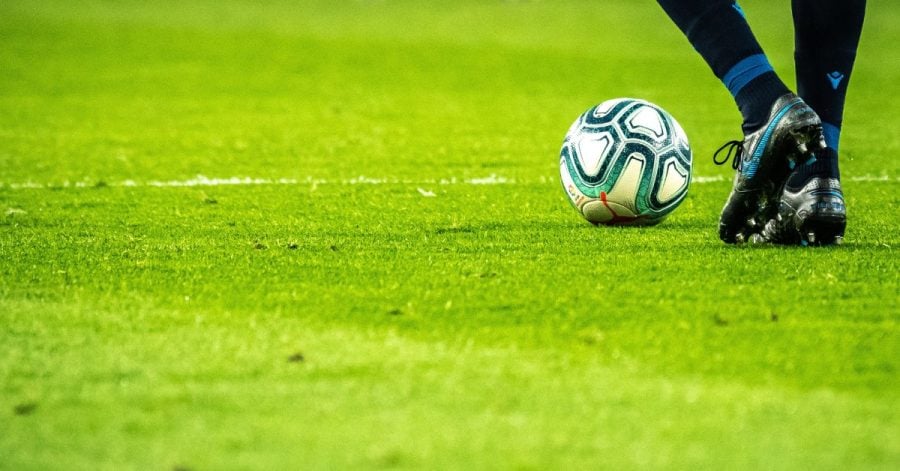“The Hand of God” goal. Diego Maradona’s shot against England in the quarterfinal match at the 1986 World Cup is one of the most controversial events in football to this day. But much has changed in the beloved, intense and nail-biting game in the last 36 years. Now that football fans all around the world shift their focus to the biggest sports event in the world – The FIFA World Cup, we take a look at how much technology has impacted their favorite sport.
The adoption of AI in football has made running a successful team much about reading and acting on data sets. Maradona’s type of controversies will stay in football history. But it makes us wonder if the ultimate goal of tech adoption in sports is to make the game fairer or keep football clubs profitable.
With that in mind, The Recursive has prepared an analysis of 7 ways in which AI is forever changing how football is played.
#1 Scouting and recruiting talent
There is a lot of talent running around the football fields in every country, but the places on the rosters of the world’s best teams is limited and there is always the chance that someone may not make the final cut, purely because there wasn’t a team scout who watched him play. AiSCOUT, an England based startup, which allows amateur players to take videos of themselves practicing and doing different exercises for stamina, durability and skills, gives scouts the necessary information to make the decision whether they want the player or not.
As AiSCOUTS CEO Darren Peries told Forbes: “It’s all about players seizing opportunities. There are players who will never be scouted and we’re using technology to reach these players.” An example of how this AI system has helped amateur players get recruited, is given by Ben Greenwood. He used AiSCOUTS and now he is playing for his favorite childhood team – Chelsea, and his home country national team of Ireland.
The use of AI in football for scouting is further exemplified by Bulgarian sports analytics company Ensk.ai. They are also working on a next-generation football recruitment analytics tool. Using a combination of advanced statistical models, artificial intelligence, and understanding of the football club’s individual needs, philosophies, and team dynamics, the startup aims to reduce transfer waste and identify the right talent. The company is backed by the Bulgarian venture capital fund Morningside Hill.
#2 Improving coaches’ decision making process
Just before the 2022 World Cup in Qatar, the stakes could not be higher. There are major contenders, who are desperate to beat France and take their spot as champions of the world. But with this, there is always the chance of human error, in particular a coach’s error, which can be devastating for the outcome of the game. Therefore, more football clubs are using AI to keep track and analyze their games as a team, every individual player’s performance, and even how their competitors play. Thus, the coach has good insights into what he needs to improve and how he can do this, lowering the risk of human misconceptions.
One club implementing this strategy is the Scottish Glasgow Rangers. They are working together with Hudl, which analyzes and improves the strategies based on the clubs past performance in the league.
The Bulgarian football performance data company Ubitrack, founded in 2019, uses automated data extraction technologies and solutions to aid football clubs in their pursuit of finding the best performing players. Based on that data, football clubs can assess their teams’ performance, identify areas to improve, and also analyze the competition.
#3 Wearables to monitor players’ health
The most important thing in every sport is how players perform. How they handle the ball and accelerate, how much distance they cover in a game, and the list goes on. Keeping a precise track of all those elements was relatively hard up until the use of AI in football.
Now wearables enter the field to change that. The brand C-Exoskeleton is developing a knee pad, helping coaches and managers to keep track of their players performances.
. The players are wearing AI-assisted vests, which show their health indicators on a computer located on the bench. A certain player’s heart rate becomes awfully high and the coach decides to sub him out to get some rest, because he will be an important part of the team in their next game.
#4 Tools that predict injuries
In football, as in every other sport, injuries are the biggest setback for upcoming starts. When you play sports in a professional and competitive setting, you are expected to perform at your best abilities because of the pay you are receiving and if you do not perform well, the club cannot generate a profit. Moreover, some injuries can be lethal. With the implementation of AI in football and other sports, coaches know when a player is projected to get injured and they can decide what to do in the situation. This method also predicts when the player will be healthy enough to resume practicing and play at a high level.
#5 Goal line, offsides, and foul-prevention technology
Going back to the infamous “Hand of God goal”, maybe the history timeline of soccer would have been a whole lot different, if we had all the technology we use today.
This year, the 2022 FIFA World Cup will implement a new type of goal line technology, which will send the decision to the referee, instead of him needing to look at the camera and decide on his own. This is believed to remove human error out of the equation, and lead to more fear matches.
Offsides have also brought a great deal of controversy to football. In most games, there is at least one offside which is or isn’t called correctly by the sideline officials, which can have a big impact on the end result. FIFA has announced that for the 2022 World Cup in Qatar, they will be using a 100% better VAR for offsides and awarding fouls. It will be fully automatic, sending real time signals to the control room of the stadium, where a computer will recreate the situation with 3D models, drawing the offside line and determining whether the goal should be awarded or not. Every bit of information will be communicated with the sideline officials, which eliminates the possibility of human error.
If you have watched at least one game of soccer in your life, you have seen the players, after being awarded a foul, moving the ball from the place that they got fouled. This happens with penalties as well, but in the 2022 World Cup that would be no longer possible. FIFA has announced that there will be a microchip inside the Al Rihla, the official ball for the tournament and that will allow the officials to know the exact place they would need to put the ball in, after a foul. This microchip is also going to contribute to the semi-automatic offside, by showing exactly when the player touched the ball.
#6 Controlling the temperature at the stadiums and predict fans swelling
The game of football has been a reason for a huge amount of fights between fans, crowds going out of control and people illegally entering stadiums to watch matches. This FIFA World Cup, it is estimated that 1.2 million people are going to Qatar to see their country battle it out for the most important trophy in the world. To prevent crowds from fighting and breaking the law, more than 100 technicians will be working from the capital, Doha, using AI-enabled facial recognition, fully automated doors and cameras, which will guide people to avoid collisions between fans. There will be more than 200,000 integrated units spread equally in the 8 World Cup stadiums, keeping track of the behavior of their fans and “controlling the crowd”.
#7 Broadcasting of games
The use of AI in football can also be seen in broadcasting. The platform Pixelot uses AI-driven cameras, which follow all the moving objects that are on the field without the need of a human operator, thus allowing the platform to stream more games that otherwise would have never been seen from people, who are not at the stadium. Their primary focus is soccer, but they also broadcast basketball and hockey.
The platform was founded in 2014 and some of their clients include second leagues in Mexico and Germany.







